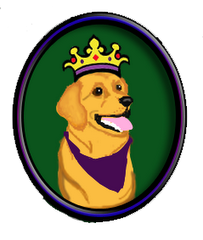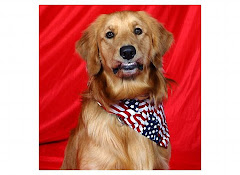Three Dog Bakery - All Natural Food and Treats for Dogs
 Okay, I'll admit it....I actually took a bite of one of these treats because it smelled so good. And you know what? It WAS good! No wonder my pups love them!
Okay, I'll admit it....I actually took a bite of one of these treats because it smelled so good. And you know what? It WAS good! No wonder my pups love them!
What the heck am I talking about? I'll explain.
Recently, I was given the opportunity to try several products from the Three Dog Bakery on my guys. I was sent samples of their dry kibble, wet entree meals, and assorted treats. I was familiar with their treats (especially the cookies with carob chips which my pups love) and the entree meals, which I feed my guys for dinner occasionally. I was aware of the company and their philosophy, and liked what I saw. I had never tried the kibble, though, so I was looking forward to letting my 4-legged critics give it a try.
First a little background on the company. Three Dog Bakery was founded in 1989 by Mark Beckloff and Dan Dye....and of course their three dogs, Gracie, Sarah, and Dottie. The company has grown to have stores all over North America, as well as Japan and China, not to mention their online store.
In addition to dog food and treats, they have an assortment of "bakery" items that, quite frankly, I wouldn't mind eating myself. There are "pupcakes", personalized bone shaped or round cakes, sandwich cookies, Beagle Bagels, and many other items. They are basically just like cakes and cookies for people, only with less fat, no refined sugar, and nothing artificial. Their treats come in flavors such as peanut butter, carob chip, vanilla, apple and oatmeal, mint, sweet potato, and molasses.
Three Dog Bakery promotes their products as "all natural food and treats for dogs." They do not use any preservatives or chemicals, artificial colors or flavors, fillers, refined sugars, or salt. Their food and treats are made in the USA. Pet owners are encouraged to bring their dogs to the store with them, where they can try out various free samples...and probably do a lot of drooling!
A look at the ingredients they use and their manufacturing process gave me nothing at all to growl at (sorry, I know that was corny). High quality proteins, grains, vegetables and fruits are listed. They do not use any by-products. Let's look at a couple items individually.
Their Bakery Blend dry kibble is baked rather than extruded. If you have been reading my blog all along, I explained in an earlier entry about those processes. Baking gives a crunchier, more nutrient-dense kibble than food extruded at high heat levels. There are several formulas, but I will look at the wheat-free lamb and rice (the chicken formula does contain wheat). The ingredients listed are: Lamb meal, ground oats, lamb, ground potatoes, chicken fat (preserved with vitamin E), dried eggs, beet pulp, cranberries, blueberries, garlic, sage, ground flax seed, and a long list of vitamins and minerals. I found nothing in the list that would be cause for concern or make me hesitate to use this food. My guys loved it, by the way.
I tried their Entree for Dogs Chicken, Carrots and Green Beans flavor on my dogs. The food is sealed in foil-lined pouches, ready to eat. The stuff smelled good enough that it made me hungry! It looked like a stew I would make for my family. The ingredients are: Chicken, carrots, green beans, cooked rice, flax seed, and a list of vitamins and minerals. There are a couple other flavors as well.
You already know the dog cookies are good...I admitted to trying one!
Three Dog Bakery has a couple of charitable, non-profit organizations they created. The Three Dog Bakery Foundation offers financial assistance in the form of grants to any properly licensed, non-profit dog or cat group with a focus on rescuing dogs and cats. The company donates up to 1% of their profits to help support the Foundation. The Gracie Foundation acts as a "red cross for dogs" in need. It works to provide immediate response and crucial supplies to pets in emergency situations, offering financial assistance to properly licensed, non-profit companion animal groups.
All in all, I am very impressed with the company, its products, and their general philosophy and charitable work. I would not hesitate to recommend any of their food or treats to anyone, and will continue to use some of them myself.
Give them a try. Your dogs will NOT be disappointed!
Oh yeah.....they do make "We Pity the Kitty" all natural cat treats as well.
Their site: http://threedog.com/

















































